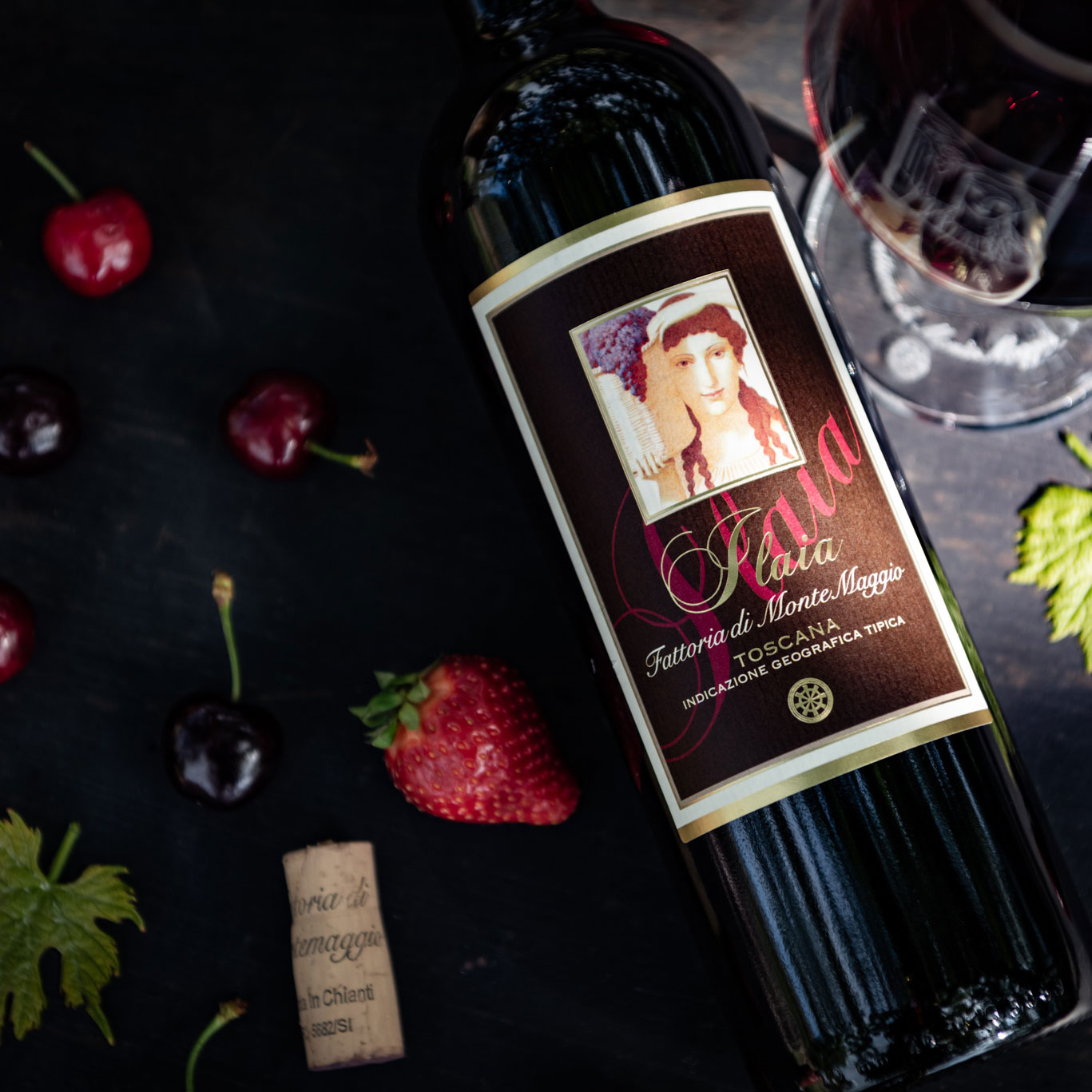
Tradition and Revolution in a few words rediscovering our Art
Those of you who have known Montemaggio for a long time know very well how interested we are in the research and recovery of what are the traditions of the land of Chianti Classico, and how being faithful to a purely traditionalist approach (at least as far as our Chianti Classico wines are concerned) is of vital importance.
This desire to always remain poised between tradition and revolution obviously led us to ask ourselves what we could do to differentiate ourselves by recovering an important slice of the past.
A past, ours, that is full of surprises.
One of these has certainly been Pugnitello.
The Grapevine
Vine reintroduced by us 13 years ago and recovered by the University of Florence.
The origin of the Pugnitello vine has something of a mystery, thought to come from the Grossetano area.
It has been hypothesized to be related to Montepulciano even though it differs from it in terms of productivity, which in Pugnitello is very low, and obviously also in the shape of the bunch.
In fact, this grape gets its name precisely from the shape of the bunch, which resembles a closed fist.
“The Pugnitello grape variety has a medium, pentagonal, pentalobed leaf. As we said the cluster is compact, tending to be small and pyramidal.” As for the berries these have “spheroidal shape and medium size with a thick and consistent blue-black and rather pruinose skin.”
Let us now analyze the spread of this grape.
Pugnitello is widespread throughout Tuscany, but we admit that from our point of view it has found its home within the Raddese region.
Radda in Chianti
Radda in Chianti is the subzone (UGA- Additional Geographical Unit) of Chianti Classico that is found to have a higher average altitude 500-700 meters above sea level.
And Pugnitello develops here with elegance, demonstrating nobility, freshness and crisp but never intrusive tannins.
This native grape variety has good vigor and average production with an extremely late harvest time (at least in our areas) roughly after the second week of November. This certainly complicates the relationship between winemaker and pugnitello, at that particular time of year there is frequent rainfall and the important density of the grapes of this grape obviously creates problems.
Pugnitello is going to absorb water in a really important way and the grapes will be particularly exposed to fungal diseases.
From Pugnitello we obtain a wine of a very intense ruby red color characterized by beautiful purplish tones., On the nose it is slightly herbaceous with hints of ripe fruit, hints of blueberry, clove and tobacco, while on the palate it reveals a full flavor, supported by a high alcohol content, fine tannins in quality but excellent crispness and good acidity. Remarkable finish reminiscent of butter.
Let’s talk about Food Wine
“Pugnitello can be paired with robust dishes, in particular, traditional Tuscan main courses: red meats, game such as hare and wild boar, or roast Cinta Senese piglet. Vegetarians will appreciate its qualities when sipping Pugnitello with medium and long aged cheeses, such as a Pecorino di Pienza or a Fossa cheese.”
In Conclusion
We love to experiment and see what our Terroir can generate, so all you have to do is visit us for a wine tour and take a taste of our wines.






Leave a Reply